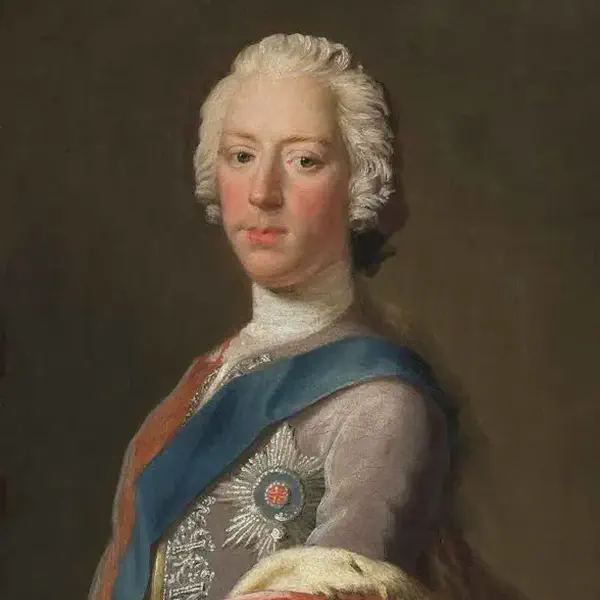
Bonnie Prince Charles Enters Edinburgh While a Bagpiper Plays - The King Shall Enjoy His Own Again
Bagpiper
The Jacobite cause was still supported by many Highland Clans, both Catholic and Protestant, and the Catholic Charles hoped for a warm welcome from these clans to start an insurgency by Jacobites throughout Britain, but there was no immediate response. Charles raised his fathers standard at Glenfinnan and there raised a large enough force to enable him to march on the city of Edinburgh, which quickly surrendered.
The entry of Bonnie Prince Charlie, also known as Charles Edward Stuart, into Edinburgh is a significant event in Scottish and British history, specifically related to the Jacobite Risings. This event occurred during the 1745 uprising, known as “The Forty-Five,” when Charles aimed to reclaim the thrones of Scotland, England, and Ireland for his father, James Francis Edward Stuart (the Old Pretender), and ultimately for the Stuart dynasty.
The Jacobite Cause
The Jacobite movement sought to restore the Stuart dynasty to the thrones of Scotland, England, and Ireland. Bonnie Prince Charlie, the grandson of the deposed King James II of England and VII of Scotland, was the figurehead of this cause during the 1745 uprising.
Entry into Edinburgh
Bonnie Prince Charlie’s entry into Edinburgh was a dramatic moment in the Jacobite Rising of 1745. It occurred after his successful landing in Scotland and gathering support among the Scottish clans. His arrival in Edinburgh was a symbolic and strategic victory for the Jacobites, as Edinburgh was the historic capital of Scotland.
Reception in Edinburgh
The reception of Charles in Edinburgh was likely mixed. While he enjoyed considerable support among certain segments of the Scottish population, particularly the Highland clans, there were also many in Scotland who were opposed to or ambivalent about the Jacobite cause.
The Edinburgh Occupation
Following his entry into Edinburgh, Charles set up his court at the Palace of Holyroodhouse. During this time, he attempted to consolidate his support, gather resources, and plan further military actions.
Battle of Prestonpans
Shortly after occupying Edinburgh, the Jacobite forces, under Charles’s command, achieved a significant victory over the government troops at the Battle of Prestonpans. This victory boosted the morale of the Jacobite army and increased Charles’s support.
Significance and Legacy
The entry of Bonnie Prince Charlie into Edinburgh and the subsequent events of the 1745 Rising have a lasting legacy in Scottish and British history. They symbolize the struggle for Scottish independence and the complex relationship between Scotland and England. The figure of Bonnie Prince Charlie remains romanticized in popular culture, symbolizing the lost cause of the Jacobites.
Ultimate Failure of the Jacobite Cause
Despite early successes, the Jacobite Rising of 1745 ultimately failed. The decisive defeat at the Battle of Culloden in 1746 led to the downfall of the Jacobite cause and significant repercussions for Scotland, particularly the Highland clans.
The King Shall Enjoy His Own Again
“The King Shall Enjoy His Own Again” is a notable song or ballad in British and Irish history, particularly associated with the Royalist cause during the English Civil War (1642–1651). This song became a symbol of the Royalist (Cavalier) support for King Charles I and later, during the Restoration, for Charles II. Its significance and enduring popularity reflect the deep political and cultural divisions of the time.
Royalist Anthem
The song was essentially a Royalist anthem, expressing loyalty to the monarchy and hope for the restoration of the king’s power. It was especially popular among those who opposed Parliament’s actions during the Civil War.
Symbolism of Restoration
The lyrics, “The King Shall Enjoy His Own Again,” symbolized the Royalist desire for the return of monarchical power and the end of Parliamentary rule. The song became an expression of hope and resilience for those who felt disenfranchised by the political changes of the time.
Use During the English Civil War
During the English Civil War, the song was used as a morale booster for the Royalist troops and supporters. Its message was clear in its opposition to the Parliamentary forces and its support for the monarchy.
Popularity During the Commonwealth and the Restoration
The song maintained its popularity during the Commonwealth period (1649–1660) as a form of covert protest against the rule of Oliver Cromwell and the republican government. With the Restoration of Charles II in 1660, it gained renewed significance and was seen as a vindication of the Royalist cause.
Legacy
“The King Shall Enjoy His Own Again” has been recorded and referenced numerous times in later historical and cultural works. It remains a part of British historical folklore and is often cited in discussions of the English Civil War and the Restoration period.
In summary, “The King Shall Enjoy His Own Again” is more than just a song; it is a historical artifact that encapsulates the sentiments and struggles of the Royalist cause during one of the most turbulent periods in British history. Its endurance over centuries underscores its importance as a symbol of loyalty to the monarchy and the longing for political restoration.